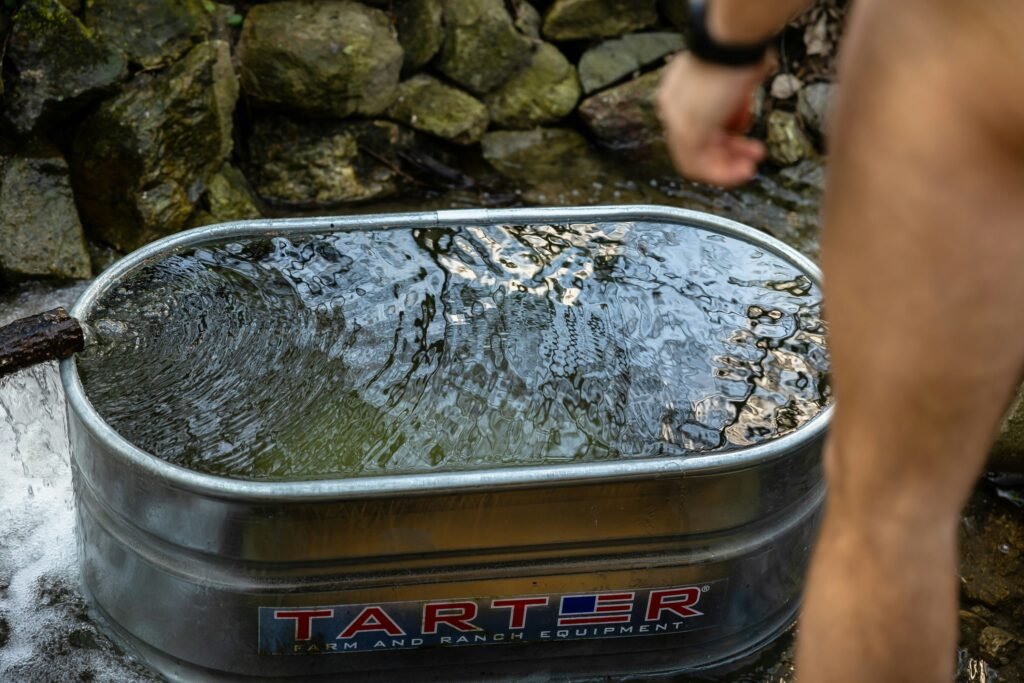What do you typically wear when you’re about to take a cold plunge? If you’ve never thought about it, or if you’re unsure of the best approach, you’re not alone. Taking the plunge, quite literally, can feel a bit daunting, especially when the weather is less than inviting. But don’t worry; I’m here to help you figure out what to wear and what to avoid.

The Importance of Choosing the Right Gear
Let’s set the scene: You’re gearing up for your first cold plunge. The air is crisp and invigorating, but the water? That’s another story. The right gear can make all the difference in how you feel and enjoy the experience. When you’re stepping into icy waters, comfort and practicality should be your top priorities.
Think About Your Comfort Level
Everyone’s comfort level varies when it comes to cold water immersion. Some people might jump right in without a second thought, while others may need a little coaxing. Regardless of where you fall on this spectrum, dressing appropriately is essential. You want to keep your body warm enough to enjoy the plunge without feeling utterly frozen afterward.
Do’s: What to Wear for a Cold Plunge
When preparing for a cold plunge, there are a few key pieces of gear that can enhance your experience. Here’s what you should definitely consider wearing.
1. Swimwear Made for Cold Water
Whether you opt for a swimsuit, shorts, or a wetsuit, choosing the right swimwear is crucial. Look for features that help retain body heat, such as:
- Wetsuits: These are specifically designed to provide insulation and keep your body warm during cold water exposure. Even if the water is frigid, a wetsuit can help trap a thin layer of water against your skin, which gets warmed by your body heat.
- Rash Guards: A long-sleeved rash guard paired with swim shorts is another great option. These provide a layer of protection from the cold as well as UV rays.
2. Accessories to Keep You Warm
Don’t underestimate the power of accessories when engaging in a cold plunge. Here are some must-have items:
- Swim Cap: A significant amount of body heat is lost through the head, so wearing a swim cap can help retain warmth. It also keeps your hair out of your face, so you can focus on the plunge itself.
- Neoprene Booties or Socks: These are versatile and provide insulation for your feet. Wet and cold feet can significantly detract from your enjoyment, so covering them up will make a big difference.
- Gloves: If you plan on hanging around in the water, wearing lightweight neoprene gloves can help keep your hands warm.
3. Quick-Dry Towels
After the plunge, a quick-dry towel can be a lifesaver. Opt for a large microfiber towel that will dry you off quickly and allow you to wrap yourself up warmly. Plus, they pack easily if you’re traveling or short on space.

Don’ts: What to Avoid Wearing
While you have a list of essentials, there are also things you definitely want to steer clear of when preparing for a cold plunge. Let’s examine what not to wear.
1. Cotton Clothing
It might be tempting to wear your comfy cotton clothing, but it’s essential to pass on these fabrics. Cotton absorbs water, and when wet, it can chill your body even further. This isn’t the time for that favorite cotton t-shirt or those beloved shorts that haven’t seen the washing machine.
2. Heavy Thermal Layers
Although it seems logical to bundle up in lots of heavy layers before entering cold water, this can be counterproductive. Heavy thermal materials can weigh you down once they’re wet, making it difficult to maneuver. You want to wear something that suits the water instead of holding you back.
3. Jewelry or Accessories
When plunging into cold water, it’s smart to leave behind any jewelry. Cold water can cause metals to become extremely cold, leading to discomfort once you’re back on land. Plus, there’s a risk of losing items in the water, so it’s safer to keep it minimal.

Additional Considerations for a Good Experience
Now that you have a better Idea of what to wear and what to avoid, there are a few other considerations that can enhance your cold plunge experience.
Mindset Matters
It might seem obvious, but your mental state plays a significant role in how your body responds to cold water. Before you jump in, take a moment to breathe deeply and mentally prepare yourself for the sensation of cold. Understand that it’s perfectly normal to feel a shock at first, and remind yourself that it will quickly pass.
Hydration and Nutrition
While this isn’t directly related to what you wear, being adequately hydrated and nourished can significantly improve your experience. Consuming a warm beverage or a light snack, like a piece of fruit, before your plunge can elevate your energy levels and help keep you from feeling too depleted afterward.
The Buddy System
There’s something about sharing the experience that makes a cold plunge more enjoyable. Invite a friend or join a group that partakes in cold water immersion, as having someone to chat with or even hold your hand can be a comforting experience.

Preparing for Post-Plunge Care
Let’s talk about what happens after you step out of the cold water. You’ve braved the icy plunge, and now it’s time to keep the good vibes rolling. Here’s how to care for yourself after the experience.
Get Warm
Immediately after getting out, make sure you have a way to warm up. Whether it’s a cozy blanket, some hot tea, or even just a heated changing room, your priority should be transitioning comfortably back to normal temperature. Use your quick-dry towel to wrap yourself up and retain as much heat as possible.
Warm Clothing
Once you’re ready to change, opt for warm, dry clothes. Fleece or thermal materials are excellent choices for post-plunge wear. Ensure that you have fluffy socks and a soft hat if you feel chilly.
Listen to Your Body
Finally, take a moment to check in with how you’re feeling. Cold plunges can invigorate you, but they can also be taxing on your body. If you’re feeling excessively cold or unwell, it’s perfectly okay to skip the next plunge or take a break. Your health is priority number one.

Conclusion
So next time you’re gearing up for a cold plunge, you can do so with confidence, clad in the right gear and mindset. With the essential do’s by your side and the don’ts steered clear, you’ll navigate the icy waters like a pro. Let’s keep in mind that cold plunges aren’t just a feat of physical endurance; they can also be a refreshing way to connect with your body and nature.
Remember, it’s not just about the plunge—it’s how you prepare for it, how you take care of yourself during it, and what you do afterward that counts. Enjoy your plunge, stay warm, and embrace the invigorating thrill of the cold!

